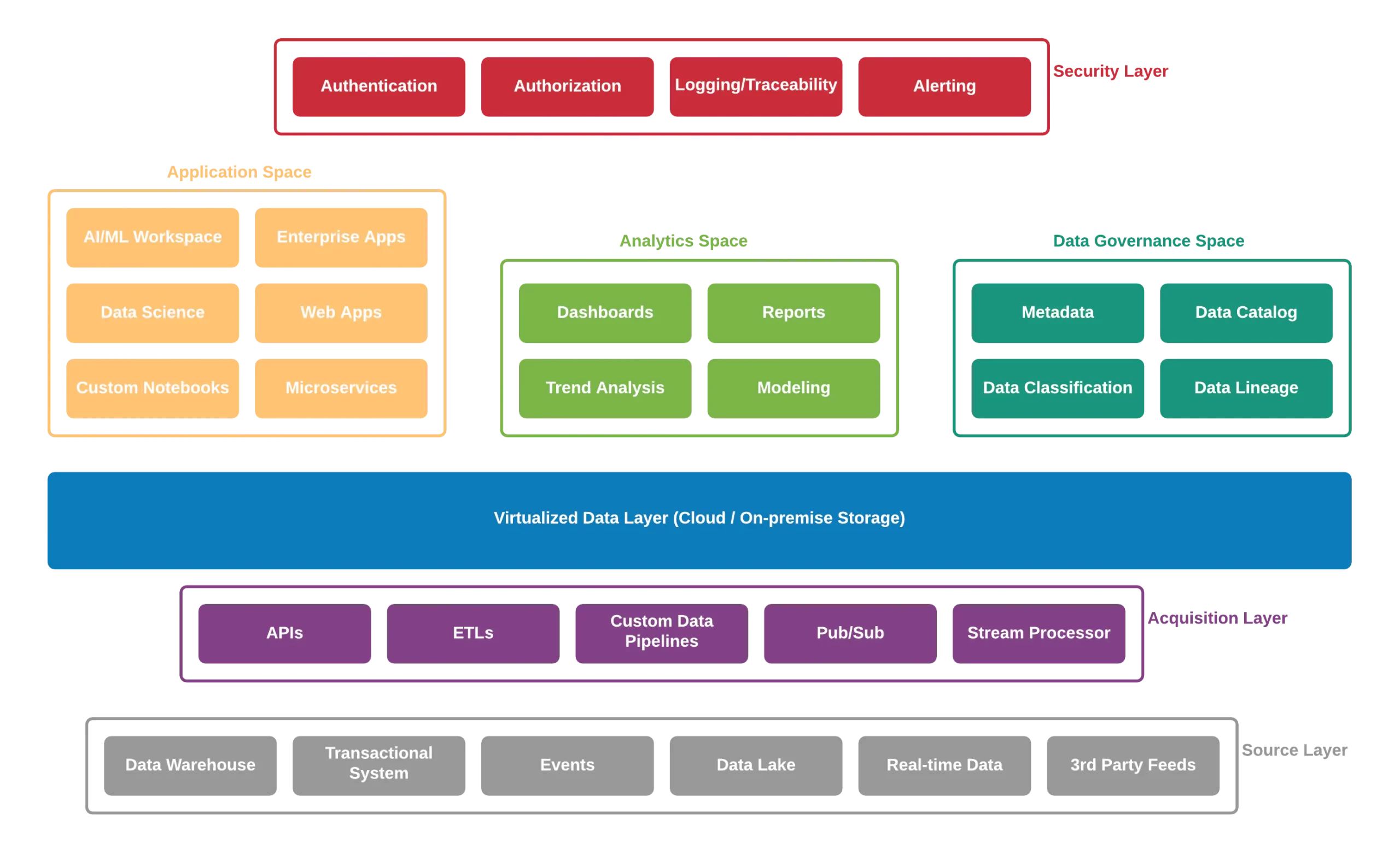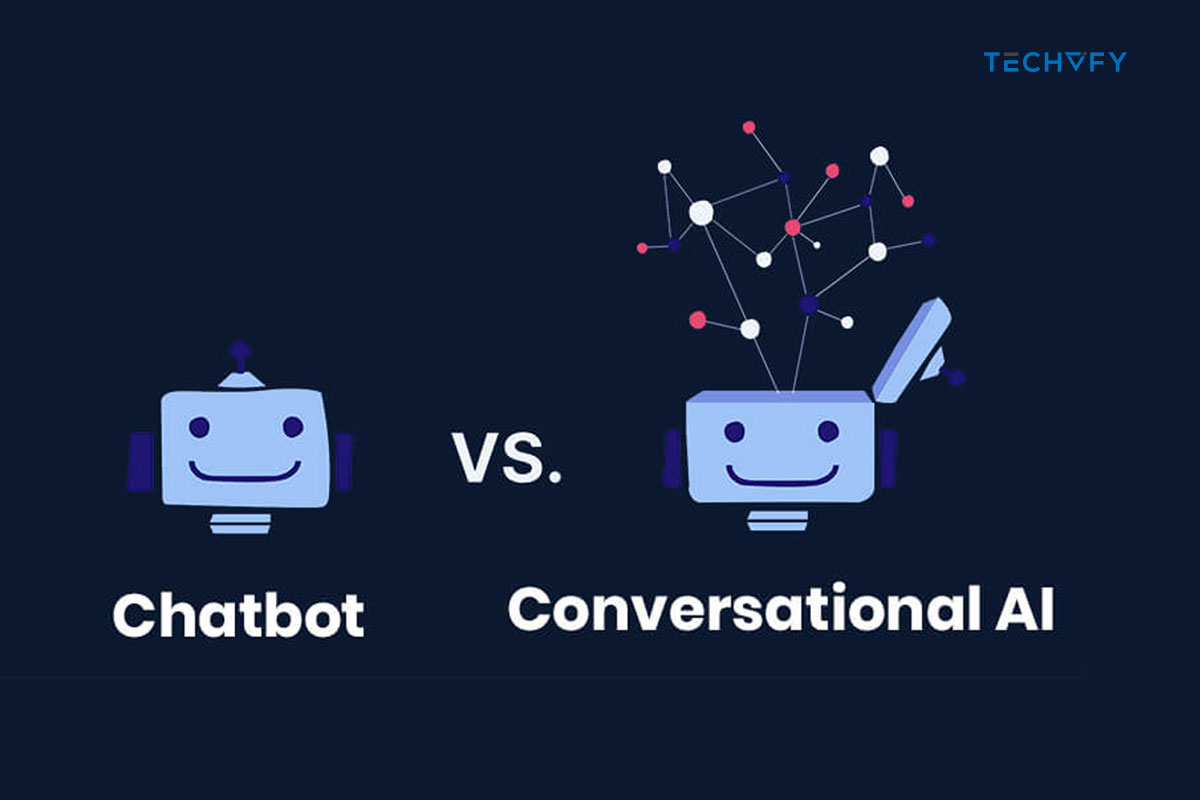What is a Data Platform, and How Can It Help Your Business?
- TECHVIFY Team
- 0 Comments
As digital data continues to explode, businesses face the challenge of effectively using it. Companies seek all-in-one platforms to gather data from various sources, simplifying tasks like analysis. These platforms, known as Data Platforms, act like central hubs, refining data into a trustworthy source and enabling advanced analytics for valuable insights.
This guide breaks down how data platforms work and gives you key points to consider when creating or picking one. You’ll also explore the different layers of the platform, along with its benefits and limitations. But before we dive into all that, let’s answer the question: What is a data platform, and how does it work?
I. What is a data platform?
We will start with the data platform definition. A data platform is like an all-in-one solution tailored to handle every step of dealing with data – from collecting and processing to analyzing and showing information. It’s designed to work with the data generated by digital systems and setups in modern businesses or organizations. While different tools and specialized apps can handle specific parts of the data journey quite well, a proper data platform takes everything, including security and keeping an eye on things.
Think of a data platform as going beyond just your regular business intelligence setup. Companies use business intelligence tools to understand their data better and make more intelligent choices. But a data platform takes it up a notch. It dives into all sorts of data structures and types within an organization, including the sensitive bits like security, privacy rules, following regulations, and keeping things observable, along with technical and operational data. All of this is vital for making crucial business decisions.
II. Elements of data platform
A modern data platform has its hands full, handling various data types and incorporating many data tools and features. Think of data ingestion, tiered storage, data warehousing, data lakes, business intelligence, analytics, data governance, management, and even ensuring data security and privacy. Some platforms are specialized to tackle specific tasks, with features designed for certain uses.
And here’s the thing: the real modern data platforms are like chameleons. They’re flexible and don’t tie you down to a specific vendor. They seamlessly mix open-source and custom tools to match your business needs.
Now, when you’re building your data platform, there are a few key points you can’t skip:
1. Scalability
Think ahead. Your platform should be able to handle growing data volumes while still performing well for what you’ve got now.
2. Intelligence
Data should practically take care of itself. The platform needs to sort, categorize, and even predict user needs. Errors? It should spot and fix those, too.
3. Security
Lock things down. Encryption and solid data lifecycle management are a must. And don’t forget about those regulations – your platform needs to meet those, too.
4. Versatility
Keep the data flowing smoothly. Ensure everyone in your organization can get the data they need without hassle.
When you combine these pieces with your data architecture, you’re building a robust and adaptable setup. This helps you keep your data safe, analyze it effectively, and store it in a way that can handle whatever the future might happen – changes in your business or a lot more data coming your way.
III. Unlock the Benefits of Data Platform
The perks of a data platform, which covers both cloud and customer data platforms, revolve around bringing together useful features that used to be spread across different solutions. In the past, lots of organizations managed their data using separate tools like operational data stores (ODS), data warehouses (DW), or data marts (DMs). But these only sometimes played nice together and could hold back growth. A data platform takes the best parts of those solutions, gathering all the data in one place where it’s safe, accessible, and usable.
For big companies, here are the benefits of customer data platform:
- Having all data happen in one cloud-based platform makes things simpler and more standardized.
- Making it easy to bring new users on board, even if they’re from companies you’ve acquired.
- Managing the tech centrally instead of having it scattered across different departments.
- Getting better reports with clear visuals shown in dashboards.
- Doing data analysis and storage faster and better than before.
Data platform benefits let you handle all sorts of data sets, no matter what they are, where they are (like in a neat database or a sprawling data lake), or how much of it there is. This kind of flexibility significantly boosts how you work with data.
IV. How does the Data Platform Work?
| Data Collection and Ingestion | The process starts by gathering data from various sources – think apps, sensors, databases, you name it. This raw data is then brought into the data platform, where it’s cleaned up, organized, and prepared for the following stages. |
| Data Processing | Now that we have our data inside, it’s time for some tidying up. Data processing steps in to refine the raw data. It corrects errors, standardizes formats, and adds extra information to make the data more valuable. |
| Data Storage | Processed data needs a home, and that’s where data storage comes in. This is like a giant digital filing cabinet. Depending on the data platform, it could be a traditional database or a modern data lake. It’s built to handle all sorts of data types and sizes, from structured to unstructured. |
| Data Analysis and Visualization | With data nicely stored, it’s time to extract insights. Data analysis tools crunch the numbers, run calculations, and generate reports. But numbers alone can be dull, so the platform also turns data into charts, graphs, and dashboards to make it visually engaging. |
| Data Governance and Security | Data is precious, so it needs protection. Data governance sets up rules and guidelines for data quality, privacy, and usage. Security features keep the data from prying eyes and ensure only authorized folks get access. |
| Scalability and Performance | As more data flows in, the platform needs to keep its cool. Scalability ensures it can handle the load, like adding more lanes to a busy highway. Performance optimization ensures everything runs smoothly and doesn’t slow down, no matter how much data there is. |
| Integration with Other Systems | The platform doesn’t live in isolation. It plays nice with other systems – connecting data dots across different departments and applications. It’s like building bridges between islands of information. |
| Continuous Improvement | A car needs maintenance to run smoothly, but a data platform needs updates and enhancements. It adapts to new technologies and business needs, ensuring it stays valuable and effective over time. |
Conclusion
With the explosion of data sources and the sheer amount of information out there, coupled with the diverse needs of different users, things can get challenging. Businesses turn to many tools to make sense of all this data. And this is where a data platform jumps in. It acts like a superhero, pulling all the data from different places, giving it a makeover, and then passing it on to users, applications, or even for analysis.
To sum it up, data platforms have become an absolute must, no matter your business or sector. In this article, we have answered the question: “What is a data platform?” – how they work, what benefits of data platform, and all the layers they’re made of. So, if you’re still unsure how to pick the right data platform for your needs, contact TECHVIFY now to get the most precise consultant from our expert.
TECHVIFY – Global AI & Software Solution Company
From Startups to Industry Leaders: TECHVIFY prioritizes results, not just deliverables. Accelerate your time to market and see ROI early with high-performing teams, AI (including GenAI) Software Solutions, and ODC (Offshore Development Center) services.
- Email: [email protected]
- Phone: (+84)24.77762.666







